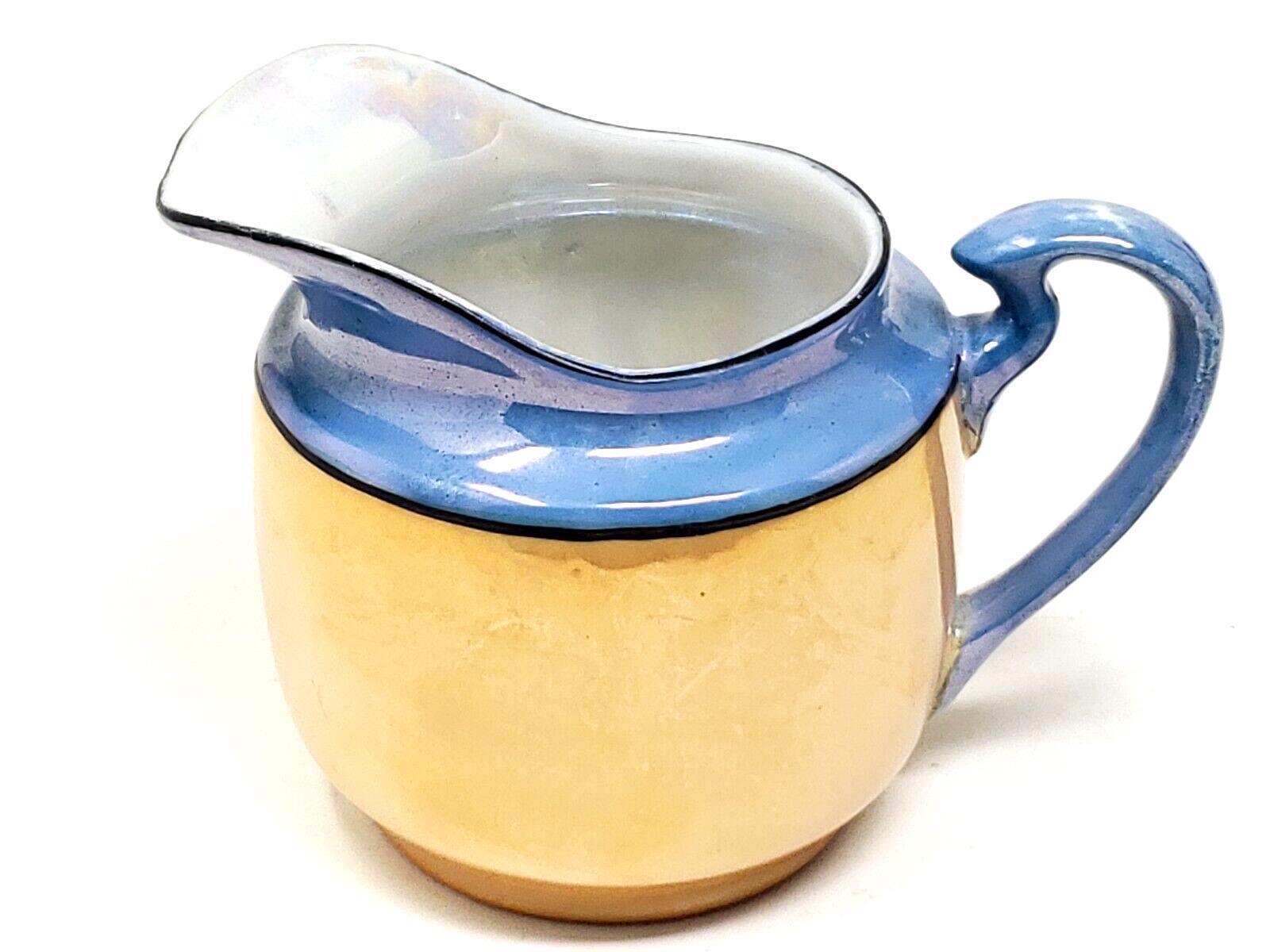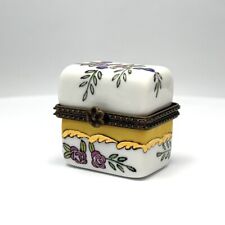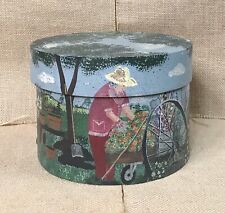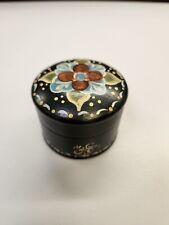When you click on links to various merchants on this site and make a purchase, this can result in this site earning a commission. Affiliate programs and affiliations include, but are not limited to, the eBay Partner Network.
Very good condition - no chips, cracks or repairs - please see photos & seller description
Item shown is the one you\'ll receiveMeasurements are approximate.
Height: 3.5\"Length (tip of spout to back of handle): 4.75\"Depth (inside): 2.5\"Width: 3\"Circumference (largest part): 10.5\"Diameter (Rim on bottom): 2.25Weight: 6 Ounces
The name Chikaramachi has been an integral part of the history of Noritake china since 1896. Little documentation exists today because nearly all the early records were lost when an incendiary bomb destroyed the home offices of Noritake on 19 March 1945. In the rubble and ashes were over 50 years of one-of-a-kind porcelain samples, ceramic molds, original drawings and sketches, registration records, etc.
The Morimura brothers, Ichizaemon and Toyo, first founded Morimuragumi (Morimura Association) in Tokyo as a Japanese goods export business, and the Hinode Company in New York in 1876. By 1882, they realized the great potential for chinaware and gradually developed what would become Noritake as their main line of merchandise. Existing records indicate that Morimuragumi had already established several exclusive porcelain decorating factories in Tokyo, Kyoto and Nagoya by 1884. In 1896, land was purchased to construct 5 buildings to consolidate the entire decorating process in Nagoya and the project was completed in 1899. Of significance is the name of one of the two parallel streets between which the buildings were constructed, Shumokucho and Chikaramachi.
The first Chikaramachi back stamp was registered in 1912. It consists of the Chinese ideograph character for tree within a circle surrounded by the words CHIKARAMACHI above and MADE IN JAPAN below. Noritake referred to this as the MARU-KI backstamp. There are no records indicating the significance of the blue, green or red color varieties.
The second series of three backstamps was registered in 1928. A crown within a laurel wreath had the word CHIKARAMACHI in a semi-circle above and MADE IN JAPAN in a straight line below. This mark appears in green or black. The second mark is red and consists of a slightly smaller crown within a laurel wreath with two lines in a semi-circle above CHIKARAMACHI and HANDPAINTED, and a semi-circle below, MADE IN JAPAN. The third mark is a samurai helmet with the word Chikaramachi in script in a semi-circle above, and MADE IN JAPAN in a straight line below. It is unknown what color varieties were produced. There are variations of the backstamps with the words FOREIGN or IMPORT used in place of MADE IN JAPAN. This was for those pieces exported to England.
Although it is unknown why Noritake developed and identified Chikaramachi as a separate line, there are several indicators that point to it being an apprenticeship program. First, the quality of the porcelain of many Chikaramachi pieces is quite crude having numerous imperfections and rough, unfinished edges. Second, the painting on many of the pieces is not up to Noritake standards with little consistency in layout and a definite lack of finesse in the brushwork. Yet, there are pieces that are the equal of the best of Noritake, almost as if they were produced on a trial basis to perfect the design before allowing their integration into the parent company lines. It\'s not known when they stopped using the Chikaramachi back marks, but all production, along with U.S. exports, ceased in 1942.
I offer combined shipping as well as volume discounts on anything purchased from me. To receive these discounts, you must use the cart and pay for all items together. Additional flat rate or free shipping items ship at no additional charge.
Books will combine based on weight via media mail - the amount you pay will be exactly what it costs me to ship - there is no discount on media mail.
I am happy to work with you on combining shipping on anything I have for sale.
An eclectic mix of estate, vintage, handmade and new
Vintage Hand Painted Blue Peach Lustreware Creamer Made in Japan 1928-1942 Very good condition - no chips, cracks or repairs - please see photos & seller description
Item shown is the one you\'ll receiveMeasurements are approximate.
Height: 3.5\"Length (tip of spout to back of handle): 4.75\"Depth (inside): 2.5\"Width: 3\"Circumference (largest part): 10.5\"Diameter (Rim on bottom): 2.25Weight: 6 Ounces
The name Chikaramachi has been an integral part of the history of Noritake china since 1896. Little documentation exists today because nearly all the early records were lost when an incendiary bomb destroyed the home offices of Noritake on 19 March 1945. In the rubble and ashes were over 50 years of one-of-a-kind porcelain samples, ceramic molds, original drawings and sketches, registration records, etc.
The Morimura brothers, Ichizaemon and Toyo, first founded Morimuragumi (Morimura Association) in Tokyo as a Japanese goods export business, and the Hinode Company in New York in 1876. By 1882, they realized the great potential for chinaware and gradually developed what would become Noritake as their main line of merchandise. Existing records indicate that Morimuragumi had already established several exclusive porcelain decorating factories in Tokyo, Kyoto and Nagoya by 1884. In 1896, land was purchased to construct 5 buildings to consolidate the entire decorating process in Nagoya and the project was completed in 1899. Of significance is the name of one of the two parallel streets between which the buildings were constructed, Shumokucho and Chikaramachi.
The first Chikaramachi back stamp was registered in 1912. It consists of the Chinese ideograph character for tree within a circle surrounded by the words CHIKARAMACHI above and MADE IN JAPAN below. Noritake referred to this as the MARU-KI backstamp. There are no records indicating the significance of the blue, green or red color varieties.
The second series of three backstamps was registered in 1928. A crown within a laurel wreath had the word CHIKARAMACHI in a semi-circle above and MADE IN JAPAN in a straight line below. This mark appears in green or black. The second mark is red and consists of a slightly smaller crown within a laurel wreath with two lines in a semi-circle above CHIKARAMACHI and HANDPAINTED, and a semi-circle below, MADE IN JAPAN. The third mark is a samurai helmet with the word Chikaramachi in script in a semi-circle above, and MADE IN JAPAN in a straight line below. It is unknown what color varieties were produced. There are variations of the backstamps with the words FOREIGN or IMPORT used in place of MADE IN JAPAN. This was for those pieces exported to England.
Although it is unknown why Noritake developed and identified Chikaramachi as a separate line, there are several indicators that point to it being an apprenticeship program. First, the quality of the porcelain of many Chikaramachi pieces is quite crude having numerous imperfections and rough, unfinished edges. Second, the painting on many of the pieces is not up to Noritake standards with little consistency in layout and a definite lack of finesse in the brushwork. Yet, there are pieces that are the equal of the best of Noritake, almost as if they were produced on a trial basis to perfect the design before allowing their integration into the parent company lines. It\'s not known when they stopped using the Chikaramachi back marks, but all production, along with U.S. exports, ceased in 1942.
I offer combined shipping as well as volume discounts on anything purchased from me. To receive these discounts, you must use the cart and pay for all items together. Additional flat rate or free shipping items ship at no additional charge.
Books will combine based on weight via media mail - the amount you pay will be exactly what it costs me to ship - there is no discount on media mail.
I am happy to work with you on combining shipping on anything I have for sale.
We Rescue, Foster, Transport and Donate - Thanks for Supporting Our Efforts!
Listing and template services provided by inkFrog









